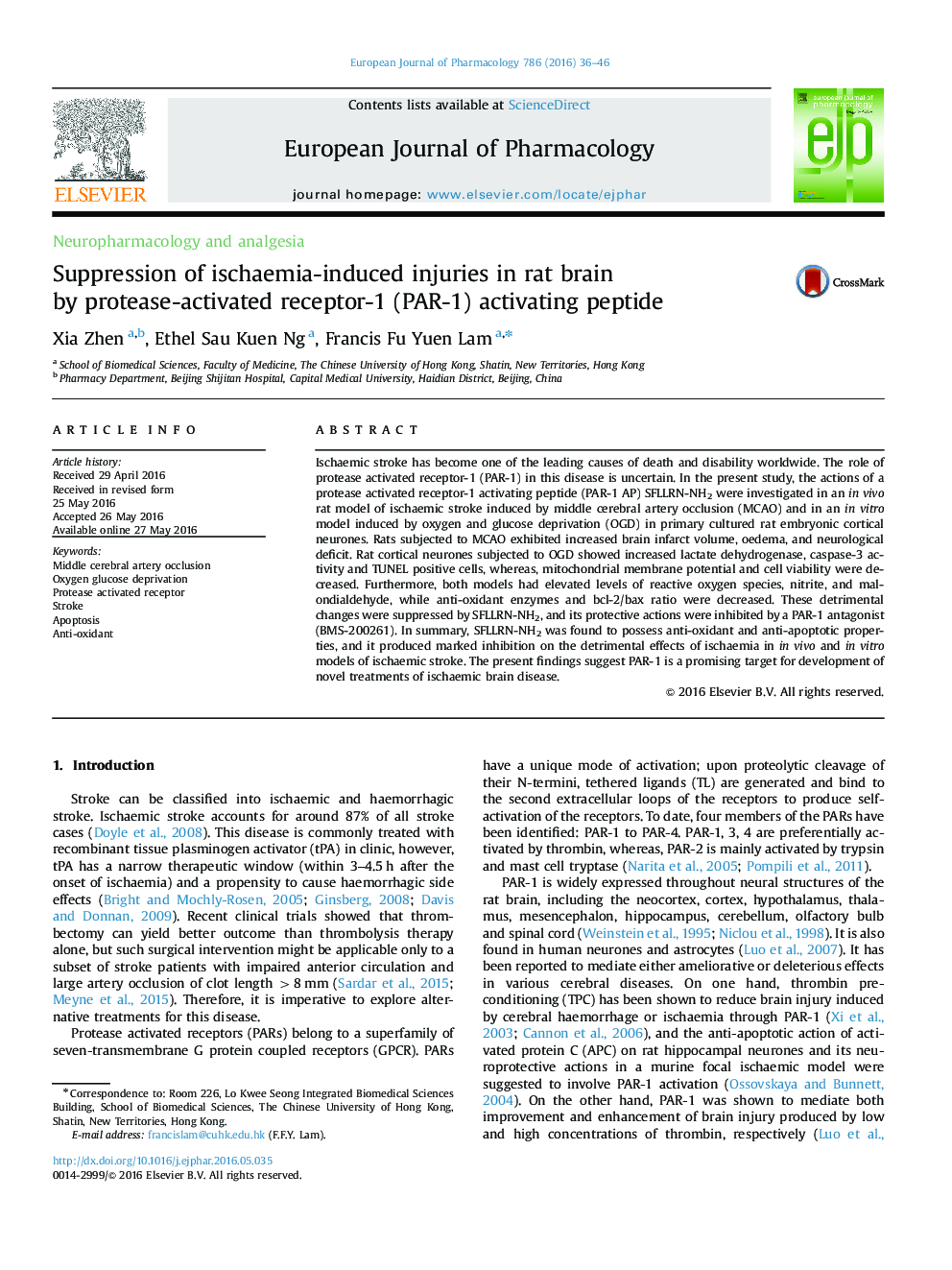| Article ID | Journal | Published Year | Pages | File Type |
|---|---|---|---|---|
| 2530992 | European Journal of Pharmacology | 2016 | 11 Pages |
Ischaemic stroke has become one of the leading causes of death and disability worldwide. The role of protease activated receptor-1 (PAR-1) in this disease is uncertain. In the present study, the actions of a protease activated receptor-1 activating peptide (PAR-1 AP) SFLLRN-NH2 were investigated in an in vivo rat model of ischaemic stroke induced by middle cerebral artery occlusion (MCAO) and in an in vitro model induced by oxygen and glucose deprivation (OGD) in primary cultured rat embryonic cortical neurones. Rats subjected to MCAO exhibited increased brain infarct volume, oedema, and neurological deficit. Rat cortical neurones subjected to OGD showed increased lactate dehydrogenase, caspase-3 activity and TUNEL positive cells, whereas, mitochondrial membrane potential and cell viability were decreased. Furthermore, both models had elevated levels of reactive oxygen species, nitrite, and malondialdehyde, while anti-oxidant enzymes and bcl-2/bax ratio were decreased. These detrimental changes were suppressed by SFLLRN-NH2, and its protective actions were inhibited by a PAR-1 antagonist (BMS-200261). In summary, SFLLRN-NH2 was found to possess anti-oxidant and anti-apoptotic properties, and it produced marked inhibition on the detrimental effects of ischaemia in in vivo and in vitro models of ischaemic stroke. The present findings suggest PAR-1 is a promising target for development of novel treatments of ischaemic brain disease.
